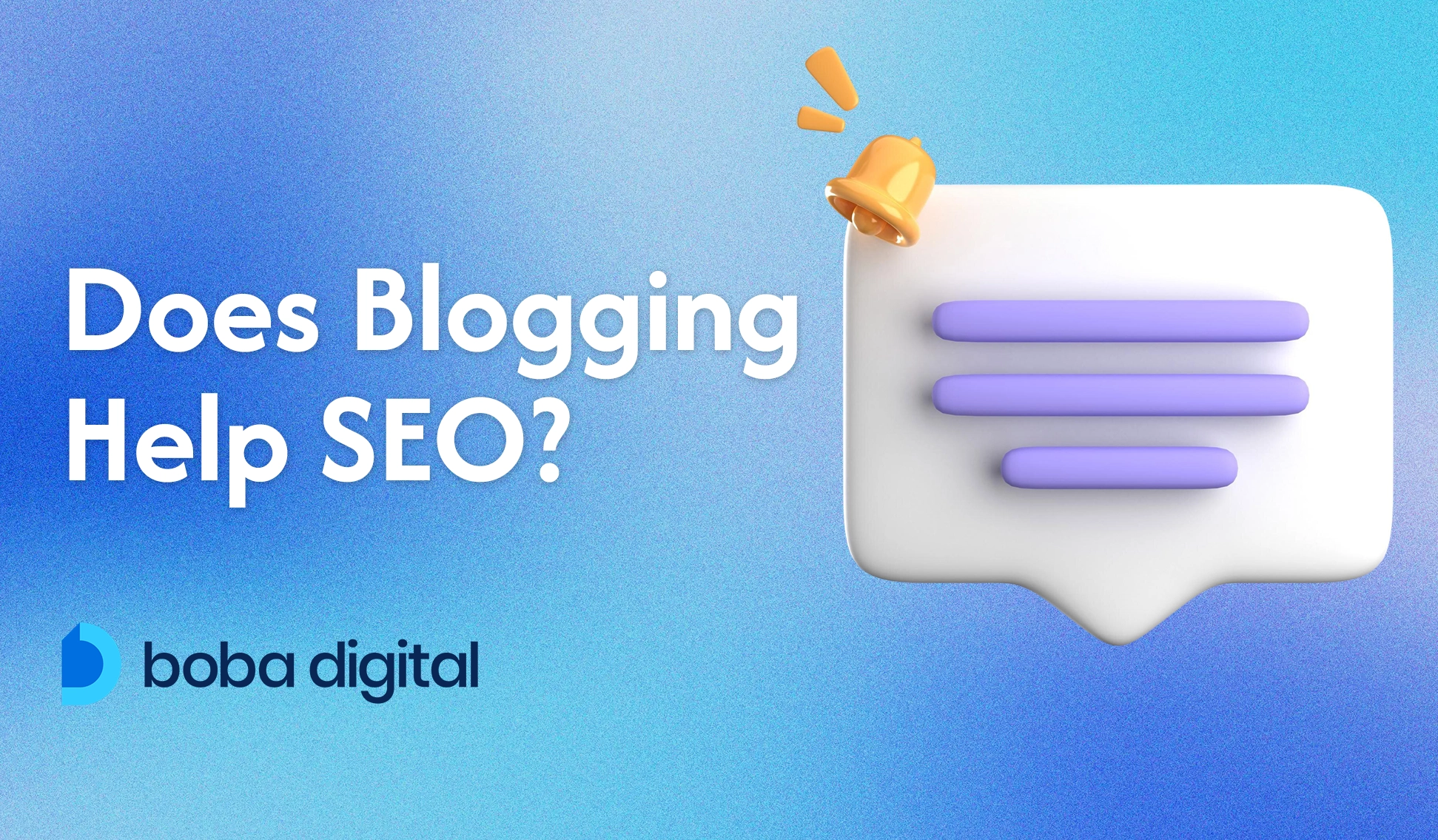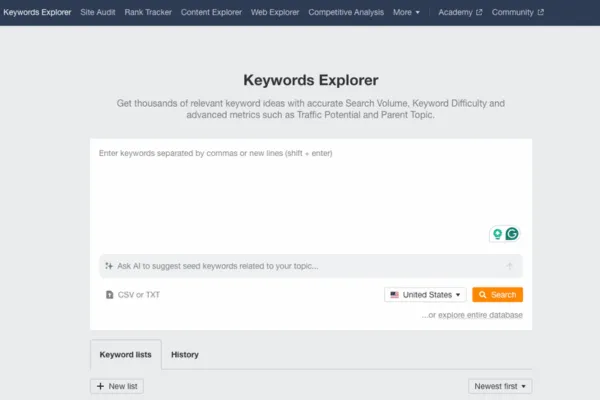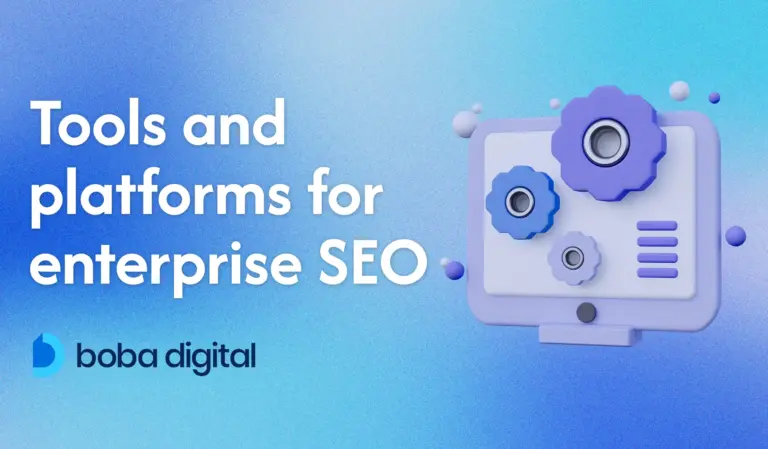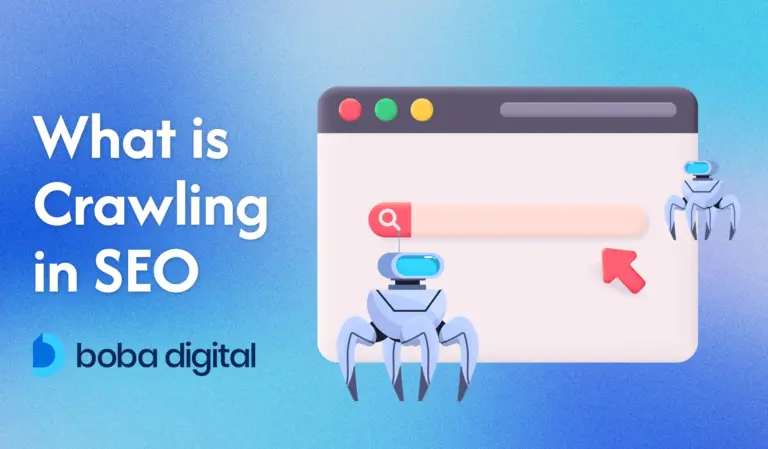Does Blogging Help SEO? Boost Your Rankings with Effective Strategies
Ever wonder why some websites consistently show up on the first page of search engine results? The answer often lies in a smart blog SEO strategy. Blogging isn’t just about sharing thoughts—it’s a powerful SEO tool that can elevate your website’s visibility, drive more traffic, and improve search engine rankings. Regularly posting fresh, valuable content gives search engines like Google exactly what they crave: relevant keywords, high-quality content, and answers to user queries.
Weaving in well-researched keywords and maintaining high-quality blog posts can make your site a go-to resource in your niche. But how does it all work? Stay tuned as we unravel the secrets of using blog content to supercharge your SEO strategy.
Does Blogging Help SEO Campaigns?
Absolutely! Blogging is a highly effective tool for boosting SEO campaigns. It provides an ideal platform to consistently publish fresh, relevant content that search engines love. By creating high-quality blog posts, you can strategically incorporate specific keywords, optimize blog content, and build valuable internal and external links—all of which contribute to better search engine rankings.
For example, companies that maintain a blog see 55% more website visitors than those without one. HubSpot Research supports this, showcasing the immense impact of blogging on driving organic traffic and boosting site visibility.
Beyond increasing website traffic, blogging also supports technical SEO efforts by enhancing site structure, creating valuable content for search engine crawlers, and providing opportunities for link building. When combined with other SEO techniques, blogging becomes a key component of a well-rounded SEO strategy.
How Blogging Supports SEO?
Fresh Content
Search engines, especially Google, prioritize websites that regularly update their content. They want to see active, engaging websites that provide value to users, and fresh content is a strong signal of that.
When you publish new blog posts consistently, you’re essentially telling search engine crawlers, “Hey, my site is alive and kicking!” This boosts your website’s chances of appearing in search engine results pages (SERPs) more frequently.
Blogs serve as the perfect platform for keeping your content fresh. Unlike static web pages, a blog allows for regular updates with new insights, industry trends, or answers to your audience’s questions. Each new post offers an opportunity to introduce relevant keywords, share valuable content, and improve search engine rankings.
Over time, this steady stream of high-quality blog content not only attracts search engines but also keeps your audience coming back for more.
Additionally, the more you update your blog, the more chances you create for internal and external links. These links help search engines understand your site’s structure and improve your site’s authority. It’s a simple yet effective way to show search engines like Google that your website is a reliable source of information, boosting your overall SEO performance.
Keyword Optimization
Blogging is a great way to naturally integrate targeted keywords into your website’s content. When users search for specific queries, search engines like Google scan web pages for relevant keywords to determine which results to display.
Well-crafted blog posts allow you to incorporate these keywords organically, strengthening your SEO strategy and improving your chances of ranking higher in search results.
For instance, you can create blog content around long-tail keywords—those detailed, specific search phrases that often reflect a user’s intent.
Examples include phrases like “best lightweight running shoes for flat feet”, “how to fix a leaky faucet under the kitchen sink”, or “vegan recipes for meal prep on a budget”. These keywords are not only more precise but also typically less competitive, giving your blog a better chance to rank higher in search engine results.
By aligning your blog topics with these specific queries, you attract an audience actively seeking the solutions you provide. When someone lands on your blog because they searched for a specific question, they’re more likely to engage with your content, explore your website, and convert into a customer. This strategic use of keywords boosts your site’s visibility while delivering valuable content to the right audience.
Link Building and Authority
High-quality blog content plays a pivotal role in building your website’s authority through link building. Just as glowing testimonials from satisfied customers build trust in your brand, backlinks from reputable websites act as endorsements in the eyes of search engines.
When a well-regarded site links to your blog content, it’s like a vote of confidence, signaling to search engines like Google that your site is a valuable and trustworthy resource. This boost in domain authority can lead to improved search engine rankings and increased organic search traffic.
Aside from external links, internal links within your blog posts are equally powerful. Think of them as a guided tour through your website. When you link from one blog post to another relevant article or service page, you’re not only offering readers a seamless way to explore more of your content but also helping search engine crawlers navigate your site.
This internal linking strategy enhances your website’s structure, improves indexing, and ensures that more of your valuable content is visible in search engine results pages (SERPs).
The benefits are twofold: visitors stay longer on your site, exploring more pages and engaging with your content, which reduces bounce rates and strengthens on-page SEO. Simultaneously, search engines gain a clearer understanding of your site’s content and hierarchy, further boosting your SEO performance.
Through strategic link building, your blog not only draws more traffic but also solidifies your website’s standing as an authoritative source in your industry.
Why You Should Blog To Help Your SEO?
Increased Visibility
Blogging opens up countless opportunities to increase your website’s visibility on search engine results pages. When you consistently publish well-crafted blog posts that align with your audience’s interests and answer their questions, your website becomes a go-to resource.
This alignment with search engine optimization (SEO) principles ensures your site is not only relevant but also highly regarded by search engines like Google.
A well-rounded blog strategy allows your website to cover a wide array of topics, tapping into diverse search intents—whether users are looking for information or ready to make a purchase.
This method enhances organic search traffic and builds a robust SEO foundation by integrating a mix of short and long-tail keywords into your content.
Every new blog post acts as a fresh opportunity to enhance your site’s keyword portfolio. As your blog grows, so does your site’s digital presence, offering search engines more material to index and rank.
This steady flow of valuable content strengthens your website’s authority, improves search rankings, and ensures a consistent influx of relevant visitors who are more likely to engage with your brand.
Establishing Authority
Regular blogging does more than just fill your website with fresh content—it establishes your brand as a thought leader in your industry. Each blog post is an opportunity to share valuable insights, offer practical solutions, and address trending topics relevant to your audience.
As your blog grows, so does your reputation as a reliable source of information. Readers begin to recognize your expertise, returning to your site when they need trustworthy answers or expert advice.
This consistent flow of high-quality content doesn’t just resonate with your audience. Search engines also take notice.
When Google and other search engines detect that your site consistently publishes valuable, relevant material, they are more likely to view your site as an authoritative source within your niche. This recognition can lead to improved search engine rankings, increased organic traffic, and greater online visibility.
With each blog post, you solidify your brand’s reputation and strengthen your website’s performance on search engine results pages. The combined effect of audience trust and search engine recognition makes blogging an essential strategy for long-term SEO success.
Enhanced Engagement
Captivating blog content not only draws visitors to your site but also keeps them engaged. When readers find your posts informative and enjoyable, they’re more likely to stay longer, explore other pages, and interact with your content. This increased time on site sends a powerful message to search engines, signaling that your website offers valuable and relevant information.
Interactions such as comments, likes, and shares further amplify your blog’s impact. When your audience engages with your content on social media or directly on your website, it creates a ripple effect that boosts your brand’s visibility. Search engines recognize this engagement as a sign of quality content, which can contribute to higher rankings on search engine results pages.
The more your content encourages discussions and shares, the stronger your site’s authority becomes. Blogging with a focus on engagement not only helps your SEO strategy but also fosters a community around your brand, building lasting connections with your audience.
Support Core Commercial Pages
Blogging isn’t just about sharing insights—it’s a strategic tool to drive traffic to your core product or service pages.
By incorporating internal links within your blog content, you create natural pathways for readers to explore your site further. When a blog post touches on a topic related to one of your services, a well-placed link can guide interested visitors directly to the relevant page. This approach not only enhances user experience but also supports conversions by leading potential customers closer to taking action.
The impact of blogging on SEO is backed by numbers. Websites that maintain an active blog see a remarkable 434% increase in indexed pages, contributing to higher search engine rankings and improved site authority.
According to MasterBlogging, these additional indexed pages offer more opportunities for your content to appear in search results, driving organic traffic to your commercial pages.
Strategically linking blog content to your core pages also benefits your site’s authority. Search engines view these internal links as signals that your core pages hold significant value, which can boost their rankings.
The combination of increased traffic, improved page authority, and enhanced user engagement makes blogging a vital component of any robust SEO strategy.
Your Blog Can Be a Huge SEO Asset!
There’s no doubt about it—blogging is a powerhouse for long-term SEO success. Consistently creating high-quality blog content does more than just boost your search engine rankings. It establishes your website as a trusted authority, drives organic traffic, and enhances engagement with your audience.
From providing fresh content that keeps search engines coming back to index your site, to strategically incorporating targeted keywords and building valuable backlinks, blogs offer a multifaceted approach to improving your site’s SEO performance.
Engaging blog posts also support your core commercial pages by directing readers to relevant products or services, ultimately boosting conversions.
But the true magic of blogging lies in its ability to build lasting relationships with your audience. Through valuable insights, thoughtful advice, and authentic engagement, your blog becomes more than an SEO tool—it becomes a platform where connections are made, trust is built, and brand loyalty is fostered.
When executed with purpose and strategy, your blog transforms into a vital asset that not only enhances SEO efforts but also solidifies your brand’s place in the digital world.
7 Steps to Do Blogging for Your SEO Campaign
Implementing a successful SEO-focused blogging strategy requires more than just writing about trending topics. It involves a structured approach that addresses both search engine algorithms and the genuine needs of your audience.
These seven steps will guide you through creating blog content that not only boosts your search rankings but also engages and builds lasting relationships with your readers.
1. Understand Your Audience
Every effective marketing campaign starts with a deep understanding of the audience. Blogging for SEO is no different.
To craft meaningful content, you need to know exactly who you’re speaking to and what they care about. This process begins with developing detailed audience personas—fictional characters that represent your ideal customers.
Start by conducting research to gather insights into your audience’s demographics, behaviors, and motivations. Use surveys to ask direct questions about their preferences and challenges. Social media listening can help you monitor conversations about your brand and industry, giving you a pulse on trending topics and common concerns.
Competitor analysis is another valuable tool, allowing you to see what strategies work for others in your niche and identify gaps you could fill.
When building personas, focus on their specific pain points, questions, and interests. Go beyond the search terms they might use and identify the real-life problems they need solving. This ensures your blog content isn’t just optimized with keywords but genuinely resonates with readers. When your audience feels understood, they’re more likely to engage, share your content, and return for more.
A successful blog post is one that strikes the perfect balance between optimizing for search engines and connecting with real people. Remember, while keywords help search engines find your content, it’s the human connection that keeps readers coming back.
2. Keyword Research
Understanding your audience is the foundation, but knowing what they search for is the key to crafting blog content that not only engages them but also drives organic traffic to your website.
Keyword research bridges this gap, helping you identify the terms and phrases your potential readers use when searching for information related to your business.
Effective keyword research involves finding relevant keywords with a healthy search volume and manageable competition.
Tools like Google Keyword Planner, Ahrefs, or SEMrush are invaluable for this process. They provide insights into keyword popularity, competition levels, and related search queries that might not be immediately obvious.
The goal is to find that sweet spot—keywords that attract enough searches to drive traffic but aren’t so competitive that your content gets lost in the noise.
For instance, targeting a highly competitive keyword like “SEO tools” may not yield quick results, especially for new blogs. Instead, focusing on long-tail keywords like “best SEO tools for small businesses” or “how to use SEO tools for content optimization” offers a better chance of ranking. These longer phrases typically have lower competition and attract more specific, intent-driven searchers.
Another advantage of long-tail keywords is that they often align closely with user intent. Someone searching for “how to improve website SEO with blogging” is likely looking for detailed advice, giving you an opportunity to provide valuable, relevant content that meets their needs.
Targeting these niche queries will not only enhance your chances of ranking higher in search engine results but also attract a more engaged audience that finds real value in your blog.
3. Competitor Analysis
Competitor analysis isn’t about copying what others do—it’s about learning, adapting, and finding ways to differentiate your brand.
Analyzing competitor blogs not only helps you understand what works in your industry but also reveals content gaps that you can fill to set your brand apart. The goal of SEO competitor analysis is simple: leverage your competitors’ strengths and weaknesses to refine your own strategy and ultimately outperform them in search engine rankings.
Start by identifying your main competitors—those who rank well for your target keywords or dominate the search engine results pages (SERPs) in your niche.
Tools like SEMrush, Ahrefs, or Moz are invaluable for this process. These platforms allow you to research your competitors’ content strategies, showing which blog posts drive the most traffic, what keywords they rank for, and where their backlinks come from.
As you analyze their content, look for patterns.
Are they consistently writing about certain topics?
Do they target specific keywords repeatedly?
What format do they use—listicles, how-to guides, or in-depth analysis?
Understanding these elements helps you gauge what resonates with your shared audience.
More importantly, pay attention to what they might be missing. If you find that your competitors rarely produce content on emerging trends or only scratch the surface of complex topics, this is your opportunity to step in with more detailed, high-quality blog posts.
4. Content Creation
Creating high-quality blog content is where your SEO strategy truly comes to life. Search engines reward original, valuable, and engaging content that meets the needs of its users.
When crafting your blog posts, focus on delivering information that is not only relevant and well-researched but also presented in a fresh and unique way.
Visuals Matter:
Visual elements such as images, videos, and infographics can significantly enhance your blog’s appeal and improve your chances of being featured in search engine results pages (SERPs). When optimized correctly, visuals can appear in Google’s image packs or video snippets, driving additional organic traffic to your site.
To achieve this, design creative graphics, use original photos and videos, and ensure every visual element includes descriptive alt text. This not only helps with accessibility but also provides search engines with more context about your content.
Prioritize Originality and Readability:
Avoid duplicate content at all costs. Search engines penalize sites with thin or copied content, which can severely impact your SEO performance.
Instead, focus on producing original blog posts that provide fresh insights or unique takes on familiar topics. Write in a clear and concise style, using active voice and keeping paragraphs short to enhance readability.
Add Value to Every Post:
Each piece of content should serve a purpose—whether it’s answering a question, solving a problem, or providing a deeper understanding of a topic.
Before publishing, ask yourself: Does this blog post provide genuine value to my audience? High-value content is more likely to be shared, bookmarked, and linked to, boosting both your site’s engagement and its authority in the eyes of search engines.
Optimize with SEO Best Practices:
Incorporate relevant keywords naturally throughout your content, including in titles, subheadings, and meta descriptions. Use internal and external links to enrich the reader’s experience and strengthen your site’s SEO structure.
Combine these elements with compelling visuals and you create a blog post that not only ranks well but also keeps your audience engaged and returning for more.
5. On-Page SEO
Achieving top spots on search engine results pages (SERPs) requires more than just great content—it demands a meticulous approach to on-page SEO.
By optimizing key elements of your blog posts, you not only enhance visibility to search engines but also improve user experience, which is equally crucial for maintaining your rankings.
Optimize Key Elements:
- Titles: Craft engaging and descriptive titles that include your target keywords while staying within the ideal length (50-60 characters).
- Meta Descriptions: Write concise meta descriptions (up to 160 characters) that summarize the content and incorporate relevant keywords to improve click-through rates.
- Headers (H1-H3): Use headers to structure your content logically. The H1 should be the main title, while H2 and H3 tags help organize subtopics and maintain a clean, easy-to-follow flow.
- Image Alt Text: Every image should include descriptive alt text. This not only supports accessibility but also helps search engines understand the content of the images, potentially boosting your chances of appearing in image search results.
- URLs: Keep URLs short, descriptive, and keyword-rich. Avoid random strings of numbers or overly complex structures.
- Internal Links: Incorporate internal links to guide readers to related content on your website. This not only improves navigation but also encourages visitors to spend more time on your site, which is a positive signal to search engines.
Follow Google’s E-E-A-T Guidelines:
Google values content that demonstrates Experience, Expertise, Authoritativeness, and Trustworthiness (E-E-A-T). To align with these guidelines:
- Provide well-researched, accurate information.
- Cite credible sources and include data to support your claims.
- Highlight your expertise through author bios or linking to professional profiles.
6. Backlinks
Backlinks, often considered the backbone of a strong SEO strategy, are powerful indicators of your website’s credibility and authority. When reputable websites link to your blog, it acts as a vote of confidence, signaling to search engines like Google that your content is valuable and trustworthy.
However, not all backlinks are created equal. Earning high-quality backlinks from reputable sources should always be a priority over accumulating a high volume of low-quality links.
One effective strategy to earn quality backlinks is through guest blogging. By contributing well-researched and insightful articles to respected websites in your industry, you not only expand your reach but also gain valuable backlinks to your own site.
These links often come from the author’s bio or within the content itself, driving referral traffic while boosting your SEO.
Another powerful method is outreach campaigns, where you connect with influencers, bloggers, and industry experts. Sharing valuable insights, research, or unique resources with these contacts can encourage them to link to your content as a credible source.
This approach works particularly well when your content fills a gap or provides fresh perspectives on trending topics.
Creating shareable resources, such as infographics, in-depth guides, or original studies, is also a great way to attract natural backlinks. When your content offers real value, other websites are more likely to reference it, enhancing your site’s authority and visibility in search engine results.
It’s important to avoid spammy links, as they can harm your SEO rather than help it. Practices such as buying links, engaging in link exchanges, or using automated backlink generation tools may lead to penalties from search engines.
Instead, focus on a long-term strategy that emphasizes quality, relevance, and natural link-building from reputable sources. This approach not only improves your search rankings but also strengthens your website’s online reputation.
7. Monitor and Adjust Your Strategy
Creating an effective blog for your SEO campaign is not a one-and-done task. To maintain and enhance your blog’s performance, you need to consistently monitor its results and refine your strategy based on real-world data. This continuous process of evaluation and adjustment ensures that your content remains relevant, engaging, and optimized for search engines.
Track Blog Performance:
Monitoring key performance metrics is crucial to understanding how well your blog is contributing to your overall SEO goals. Tools like Google Analytics and Google Search Console provide invaluable insights into your blog’s organic traffic, keyword rankings, conversion rates, and engagement levels.
These analytics help you see which blog posts are driving the most traffic, where your visitors are coming from, and how they interact with your content.
When evaluating your blog’s performance, focus on specific metrics such as:
- Organic Traffic: Indicates how well your blog is performing in search engine rankings.
- Search Engine Rankings: Shows which keywords are bringing traffic and where your blog ranks on search engine results pages (SERPs).
- Conversions: Measures how effectively your blog content drives desired actions, such as sign-ups, purchases, or inquiries.
- Engagement Metrics: Includes time spent on page, bounce rate, and social media shares, highlighting how engaging your content is to readers.
Analyze and Optimize:
Use the data gathered from analytics tools to identify trends in user behavior and popular search terms. If certain blog posts are outperforming others, analyze what makes them successful—whether it’s the topic, keyword use, or content style—and replicate those elements in future posts.
Conversely, if some posts are not generating the expected results, consider revising them. You might need to optimize these posts with high-performing keywords, update outdated information, or enhance the content to make it more valuable and engaging.
Refine Your Strategy:
Adjust your content strategy based on what works best with your target demographic. For example, if your analytics show that readers engage more with how-to guides or listicles, focus on producing more of that style.
Alternatively, if certain keywords consistently drive traffic, integrate them more strategically into new and existing content.
The key is to remain flexible and responsive to the insights gained from your analytics. This proactive approach allows you to create targeted, relevant content that not only aligns with your audience’s needs but also strengthens your overall SEO strategy.
By continually monitoring and refining your blog, you ensure it remains a powerful asset in your digital marketing toolkit.
Unleash Your SEO Power with Smart Blogging – Boba Digital is Here to Help!
Think of your blog as the secret weapon in your SEO arsenal. When done right, blogging isn’t just about filling pages with words—it’s about crafting a well-oiled machine that drives organic traffic, boosts your search engine rankings, and establishes your brand as an industry authority.
Each blog post is a stepping stone, from uncovering your audience’s true needs and mastering keyword research to delivering engaging content and earning high-quality backlinks.
A great blog is never static. It evolves, adapts, and grows, reflecting the ever-changing landscape of search engine algorithms and user behaviors. By keeping a close eye on performance metrics and refining your strategy, you ensure your content remains relevant and impactful, driving both visibility and engagement.
Ready to transform your blog into a powerhouse of SEO success? The team at Boba Digital is here to turn your vision into reality. We specialize in building smart, effective blogging strategies that align with your business goals and generate real results.
Take the leap towards higher rankings and greater brand authority! Schedule a consultation with Boba Digital today and discover how a tailored blogging approach can unlock new growth opportunities for your business.
FAQs
How does blogging help improve SEO for businesses?
Blogging enhances SEO by consistently providing fresh, valuable content that attracts search engines. It allows businesses to target specific keywords, build internal and external links, and improve site authority, leading to higher search engine rankings and increased organic traffic.
Is it better to outsource blog content or create it in-house?
Both approaches have benefits. In-house content creation ensures brand consistency and control, while outsourcing offers professional expertise, fresh perspectives, and time-saving advantages. The choice depends on your budget, resources, and content strategy needs.
How long does it take for blog posts to start improving SEO rankings?
Typically, it can take 3 to 6 months for blog posts to significantly impact SEO rankings. However, this varies based on the competitiveness of the keywords, the quality of content, and the strength of your overall SEO strategy.
Are blogs effective for campaigns?
Yes, blogs are highly effective for campaigns. They provide a platform to share in-depth information, support targeted keywords, boost brand authority, and drive engagement through valuable, shareable content.
How many blogs per month for SEO?
For optimal results, aim to publish 2 to 4 blogs per month. Consistency is key—quality matters more than quantity, so focus on delivering well-researched, SEO-optimized content regularly.











